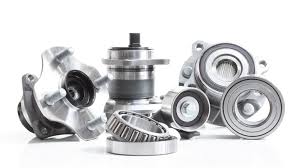Sloane is an accomplished rock climber, backpacker, cyclist, and skier. He has climbed rocks all over the world, including in Yosemite National Park and on Mount Kilimanjaro. He enjoys backpacking and cycling through beautiful landscapes, and skiing down challenging slopes.

A car requires many parts to function properly, but one of the most important components is the hub bearing. This small component is responsible for keeping your wheels running smoothly, allowing you to steer your car with ease. However, like many parts, it can wear out over time and require a replacement.
This is where our ultimate guide to the hub bearing replacement comes in, providing you with all the information you need to replace this component yourself.
Know the Signs of a Worn Hub Bearing
A worn hub bearing can be identified by several signs, such as strange noises, vibration, or wobbling while driving. You may also notice strange sounds when you turn the steering wheel or an overall decreased performance of your car. Identifying these signals early can help you take the required steps to replace the hub bearings before the damage worsens.
Gather The Tools You Need
Before beginning the process of replacing a hub bearing, you will need to ensure you have all the required tools. These tools include a floor jack, a jack stand, a breaker bar or ratchet, a torque wrench, and a wheel chock. Wearing gloves and eye protection during the repair process is also advisable.
Know the Hub Bearing Replacement Process
The hub bearing replacement process begins by using your floor jack to elevate your car onto jack stands. The wheel which needs a replacement should be removed, and the brake calliper and rotor should be taken off after disassembling. Next, the old bearing should be removed and the new one fixed. After installing everything back into place, you can torque the nut of the wheel bearing to the manufacturer-specified settings.
Don’t Take Risks
One thing that you have to be careful of while replacing a hub bearing is making sure that everything is tight enough. Skipping steps, Missing out on torque specifications, and not following instructions carefully can lead to accidents or even the repeat of the process again, so it is essential to follow the steps appropriately.
Consider the Cost-Benefit
Replacing a hub bearing is not a cheap repair, but it is not the most expensive one either. However, with the right toolset, anyone can do it themself with a little effort. Doing it yourself will save you significantly more money than paying for an auto mechanic to replace it, enabling you to have a more extensive life of use and better performance of your vehicle.
Conclusion
Replacing hub bearings yourself can seem daunting or intimidating at first, but with the help of this ultimate guide, you now have everything you need to do it yourself. While following the steps we’ve provided can save you a significant amount of money, it is vital to take your time, follow instructions carefully, and make sure every part is fixed securely. With the right tools, you can make your car run like it’s brand new again, and with a little patience, you will quickly understand and master the process of hub-bearing replacement.
